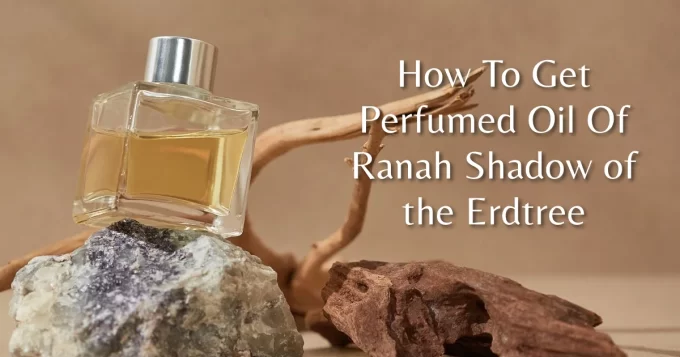Sandalwood, noted for its rich and pleasant perfume, has been cherished for thousands of years in many countries and traditions. This aromatic wood grown from the Santalum tree has a relaxing and spiritual fragrance, making it a popular ingredient in perfumery, incense, and religious rites. In this blog post, we’ll look at the history, significance, and enduring fascination of sandalwood, and why its aroma continues to enchant people all around the world.
The origins and history of sandalwood
Here’s the revised paragraph with the addition:
Sandalwood has a long and rich history, dating back to ancient India and Southeast Asia. The wood of the Santalum tree, particularly the species Santalum album, has been gathered for generations for its aromatic properties. Sandalwood was revered in ancient Hindu and Buddhist faiths, and it was commonly utilized in religious events and as an offering to deities.
Its soothing smell was said to increase spiritual clarity and improve meditation. In modern times, sandalwood remains a popular ingredient in some of the best classic chypre perfumes, adding a rich, earthy depth that complements the chypre’s balance of citrus, floral, and mossy notes
Sandalwood’s use grew beyond India, reaching China, Egypt, and the Middle East, where it became a valuable commodity via historic trading routes. Sandalwood was utilized in traditional Chinese medicine to cure a variety of conditions, including stomach problems and nervousness. It was utilized in the embalming process in Egypt, demonstrating its significance in ancient burial customs.
Scent Profile of Sandalwood
Sandalwood has a strong and rich aroma, which is frequently characterized as woody, creamy, and slightly sweet. It has a gentle, warm aroma that is both anchoring and uplifting, making it a popular option for perfumery and aromatherapy. Sandalwood is a mild but persistent aroma that lingers on the skin and in the air long after it is applied.
Sandalwood’s silky, creamy undertone distinguishes it from other woody perfumes, adding a degree of elegance and depth. Sandalwood’s creamy nature gives it the unusual ability to combine well with other aromas, boosting floral, spicy, and citrus notes in perfumes. Sandalwood, as a base note, provides a long-lasting foundation that anchors and balances a smell, making it an essential component of many luxury perfumes.
Cultural and Religious Significance of Sandalwood
Sandalwood has a strong cultural and religious importance in many parts of the world. In Hinduism, it is used as a paste or powder during rituals to represent purity and sacredness. The paste is applied to the forehead during prayer, and sandalwood incense is frequently burned in temples to create a peaceful ambiance.
In Buddhism, sandalwood is linked to spiritual awakening and awareness. The smell is thought to assist practitioners in staying concentrated during meditation, aiding in their journey to enlightenment. This sacred scent is often found in oriental chypre perfumes, blending earthy and rich notes that deepen the fragrance experience. In both faiths, sandalwood is more than just a smell; it represents spiritual growth and inner tranquility.
Sandalwood has been used in traditional medicine as well as for religious purposes. In Ayurveda, it is used for its cooling and relaxing effects, which are thought to relieve anxiety, soothe the skin, and balance the body’s energy. The wood is frequently ground into a paste and applied to the skin to alleviate rashes, acne, and other inflammatory diseases.
Sandalwood in modern perfumery
Despite its ancient origins, sandalwood is still a popular element in modern perfumery. Its versatility and enduring appeal make it a popular choice for both men’s and women’s scents. Sandalwood can be found in a wide range of scent families, including woody, oriental, floral, and fresh.
Sandalwood’s prominence in perfumery stems from its ability to compliment and enhance other substances. When combined with florals such as rose or jasmine, sandalwood provides depth and warmth, resulting in a balanced and harmonious fragrance. When paired with spices such as cardamom or cinnamon, it highlights the fragrance’s depth and complexity.
Sandalwood is a popular element in niche perfumery, where it is prized for its natural beauty and aroma. Artisanal perfumers may acquire sandalwood from certain places, such as Mysore in India or Western Australia, in order to capture the wood’s unique properties. Mysore sandalwood, in particular, is widely valued for its superior quality and has established a standard for excellence in the fragrance business.
Sustainability and Ethical Considerations
As demand for sandalwood has increased, so have questions regarding its sustainability. The slow-growing Santalum trees, particularly the highly valued Mysore sandalwood, have been overharvested in several areas, resulting in a fall in natural populations. To address this issue, efforts have been undertaken to encourage environmentally friendly production and harvesting practices.
In India, where sandalwood is regarded as a national treasure, the government has imposed stringent rules on its harvesting and trafficking. In Western Australia, Santalum spicatum, a different type of sandalwood, is grown sustainably to suit the growing demand for ethical and environmentally friendly sandalwood goods.
Consumers are increasingly looking for perfumes and goods made from sustainably harvested sandalwood, and many manufacturers are responding by stressing ethical standards throughout their supply chains. Consumers can enjoy the beauty of this aroma while also helping to preserve this valuable resource by purchasing products produced with sustainably obtained sandalwood.
Conclusion
Sandalwood’s perfume has stood the test of time, transcending nations and eras to become one of the world’s most beloved fragrances. Its soft, milky aroma has a unique power to generate feelings of tranquility and connectedness, whether employed in religious ceremonies, ancient medicine, or modern perfumery. As we continue to admire the beauty of sandalwood, we must also consider the necessity of sustainable practices to guarantee that future generations can enjoy the wonder of this precious wood.
Whether you find sandalwood in a rich perfume, a tranquil incense stick, or a soothing skincare product, its aroma is guaranteed to leave an impact, reminding us of the deep bond between nature and the human spirit.













